



















Sept. 7 1
Lesson 2 My Caring Family*
Sept. 14 Ruth 1–4 Lesson 3
Sept. 21 Genesis 13:1-12
4
Sept. 28 Genesis 21:1-6
Oct. 5 1 Samuel 18:1-4
Lesson 6 Friends Help
Oct. 12 2 Kings 4:1-7
7
Oct. 19 2 Kings 5:1-14
Lesson 8 Friends Learn about Jesus ....................................................................
Oct. 26 Mark 2:1-12
Lesson 9 God Gives Us Friends
Nov. 2 Luke 10:38-42; John 12:1-3
Lesson 10 Learning from the Bible
Nov. 9 Luke 4:16-22a
Lesson 11 Learning about Jesus
Nov. 16 Acts 3:12-26; 16:4-5; 18:23; 20:20
Lesson 12 Together We Pray and Thank God ...............................................
Nov. 23 Acts 1:13-14; 2:42-47
Lesson 13 Together We Share about Jesus
Nov. 30 Acts 20:16-38; Matthew 28:18-20

Custom-created videos accompany every Bible-in-Life lesson. Right before Step 2, a three-minute video introduces each unit theme. A guide, found with the videos, ties the unit theme to the day’s lesson.
Unit family devotions, along with the videos, can be sent to your families to continue learning at home.
You can stream these videos from the site or download to your own device.
Get the lesson videos at BibleinLife.com/Video
Preschool Teacher’s Guide for ages 3 through pre-K Can also be used for ages 4-5 or ages 3-5.
Editor Rebecca Stone
Designer
Nancy L. Haskins
To equip the Church with Christ-centered resources for making and teaching disciples who obediently transform today’s generations . . . David C Cook is a nonprofit organization dedicated to international Christian education.
© 2025 David C Cook, 4050 Lee Vance Drive, Colorado Springs, CO, 80918, U.S.A. Copyrighted material; permission required to reproduce. All rights reserved. Printed in South Korea.
All Scripture quotations, unless otherwise indicated, are taken from the Holy Bible, New International Version TM, NIV TM Copyright © 1973, 1978, 1984, 2011 by Biblica, Inc. Used with permission. All rights reserved worldwide. www.biblica.com
Cover Photo: © Camilla Bandeira/Getty Images
Contact Us
Visit our website at DavidCCook.org Contact us at 1-800-323-7543 (U.S. only) In Canada visit parasource.com (Canada Only) or 1-800-263-2664 (Canada Only)

God Gives Us Families
These lessons focus on the families God gives us. Preschoolers will learn about the babies God gave to Hannah and her husband, to Ruth and Boaz, and to Sarah and Abraham. They will see how families love and care for each other. Through the examples of Abraham and Lot who shared, children will be reminded that God wants them to share in their families.
God Gives Us Friends
This unit looks at the friends Jesus gave to His people. The lessons will focus on how God gives us friends to love each other, help each other, and learn about Jesus. Children will learn that Mary, Martha, and Lazarus were Jesus’ good friends. The story of Naaman’s maidservant will help children see that they, too, can be good friends.
God Gives Us the Church
Preschoolers will learn that God gives us the church to do things together. They will discover that with their church family they can learn from the Bible, learn how to share with others about Jesus, and pray and thank God. Children will put this into practice as they engage in these experiences in their local church and Sunday school class.
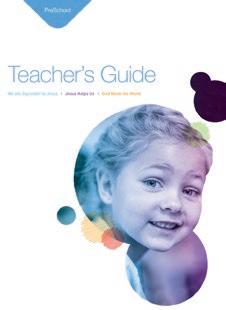

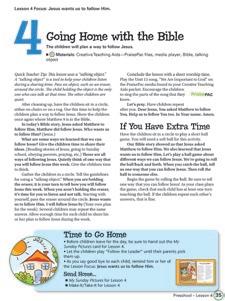
Preschool Teacher’s Guide
In every lesson, you’ll find a teacher devotional, Bible background information, tips on understanding and teaching preschoolers, and the Bible story along with a variety of activities to help children learn and apply the Bible lesson. Need one per class.

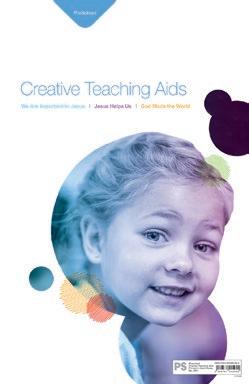

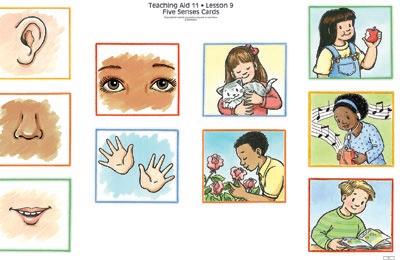


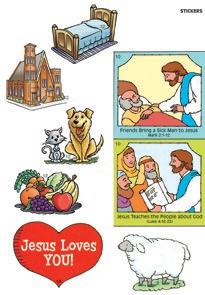
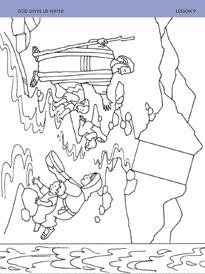
Preschool Creative Teaching Aids
This packet equips you with all essential audio and visual resources to go with the teacher’s guide. Packets include a quarterly attendance chart, posters, manipulatives, figures, games, and PraisePAC. Need one per class.
Preschool Make-It/Take-It
These craft booklets feature simple projects and lesson reminders to help the Bible lessons learned at church be meaningful throughout the week at home. Need one per student.

PraisePAC features three songs that correlate with each of the three units per quarter along with downloadable lead (song) sheets, lyric sheets, and postcards. Both full and accompaniment versions are available for each song.

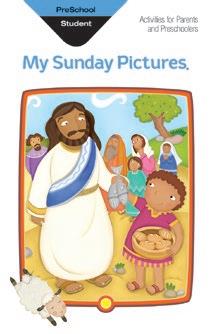

My Sunday Pictures
Help Bible lessons thrive in preschoolers’ hearts and hands as they take home these lesson cards. Each card presents the Bible story and includes family suggestions for parents to extend the Bible lesson at home during the week. Need one per student.

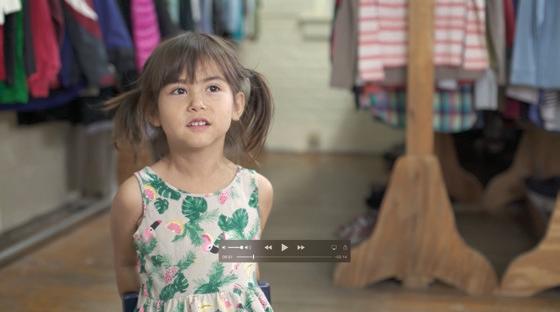
Each unit features a different video showing children living out their faith in everyday life. These threeto-four-minute video segments highlight the monthly unit theme.
There are two downloadable guides to help bring the videos into the lives of your students:
Video Connection Guide: These tie-ins can be used at the beginning of the Step 2 Bible story. Each lesson has a tie-in that connects the theme of the video to the day’s Bible story or lesson focus.
Family Devotions Guide and the lesson videos it connects with are available for the families in your church. E-mail the guides to families or download them and print them for each unit. Families can use the devotion on its own or also stream that unit’s lesson video to help their family learn and grow together. These devotions are a great way for families to build faith in everyday life!
Lesson videos, video guides, and family devotions can be found at BibleinLife.com/video

The Preschool Teacher’s Guide, Preschool Creative Teaching Aids, Preschool Make-It/TakeIt, and My Sunday Pictures are also available in a digital format. Need one bundle per class.
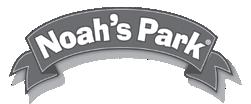
For the Noah’s Park Children’s Church that correlates with Bible-in-Life, visit our website at DavidCCook.org/ noahspark

Find ways to spark your heart and ignite your children’s ministry. Go to MinistrySpark.com and sign up to receive more free resources.
o Preschool Teacher’s Guide (1 per class)
o Preschool Creative Teaching Aids (1 per class)
o Preschool Make-It/Take-It (1 per student)
o My Sunday Pictures (1 per student)
o Bibles
o Bible-time and dress-up clothes
o Beanbags or foam balls
o Blocks
o Butcher or chart paper
o Chenille wires
o Colored pencils
o Construction paper
o Cookie cutters
o Dolls
o Glue or glue sticks
o Media player
o Paper clips
o Paper fasteners
o Play dishes and food
o Play dough (purchased or homemade)
o Rhythm instruments
o Scissors (adult and safety)
o Self-adhesive hook or glue dots
o Story board (flannel or other)
o Tape (clear, masking)
o Washable crayons and markers
o Washable watercolor paints and brushes
o Yarn, string, or thread
See individual lessons for additional supplies needed.

Bible-In-Life’s four-step plan is designed to make each lesson easy to teach. Each step engages teachers and learners to discover more about God and connect those findings to everyday life.
Getting Ready for the Bible helps children get ready to learn what God wants them to know about Him by connecting to their own experiences. With a short activity and discussion, this step gives your students time to share about themselves and their lives while building relationships with you and one another. These conversations will flow naturally into Step 2: Bible Story Time.
Bible Story Time shows children what the Bible says to them. Preschoolers hear the Bible story and then review it together. Your class will also have an opportunity to learn the unit memory verse.
The Bible and Me allows children to explore activity centers that will help them understand that Jesus knows who they are. Exploring the Bible story using play, crafts, and simple games helps preschoolers connect God’s Word into their lives.
Going Home with the Bible helps children apply what they learned about God in their own lives. Together you’ll go over that you’ve learned and provide practical ideas for children to live out their faith in everyday life.
by Leura Jones
What could be more wonderful than the God who created the heavens and earth also being the one who numbers the very hairs on our heads?
“The whole earth is filled with awe at your wonders,” declares Psalm 65:8, and we get to invite kids into that sense of awe. We can do that through the Bible lessons we teach, the prayers we pray, and the words we use as we talk to kids about their lives and the God who made them.
WONDER IN SCRIPTURE
As we share Bible stories with kids, we can ask them, “What do you think that looked like? How do you think God’s people felt? What would you have been thinking if you were there?” Piquing kids’ curiosity is a great way to spark wonder in their minds.
WONDER IN PRAYER
When we pray with kids, we can communicate wonder and amazement. Psalm 145:4 shows how to commend God’s “mighty acts” to the next generation. The words we use in prayer can do that. It can be as simple as starting with, “Great and mighty God, we are amazed by You.” We may need to keep our prayers simpler as we pray with children, but that doesn’t mean our prayers can’t be big and bold and filled with wonder.
WONDER IN OUR WORDS
As we talk with kids and they tell us about their lives and share their stories, the words we use can tap into their sense of wonder:
“Wow, just think about how much God loves you! Think about all He’s done for you!”
“Can you believe God had a purpose for your life before you were even born?”
“Isn’t it amazing the way God sees you and cares about you?”
THE WONDERS THAT THEY ARE
Every child is a wonder, and every child is naturally filled with wonder. Let’s remind ourselves to see them that way. And let’s be intentional about tapping into their ready sense of awe and wonder as we help to develop and deepen their faith in God.
Lesson Focus: God gives us families.
Memory Verse: “Love one another.” John 13:34
2
To help the children connect their own experiences with the story of Hannah and Elkanah, they will talk about their families.
• Opening Activity: Teaching Aid 2 (from Preschool Creative Teaching Aids)
• Sharing Time: No materials needed
The children will learn how God gave Samuel to Hannah and Elkanah.
• Bible Story: Teaching Aid 3 (from Preschool Creative Teaching Aids), Bible
• Bible Story Review: No materials needed
• Bible Memory Verse: No materials needed
3
To understand that God gives them families, the children will explore activity centers.
• Spoon Puppets: Old magazines, glue, plastic spoons
• Family Roleplay: No materials needed
• Family Block Play: Large and small blocks
4
By thanking God for their families, the children will apply the Bible story of Hannah and Samuel to their own lives.
• Page for Lesson 1 (from Preschool Make-It/Take-It), crayons, 12-inch length of yarn for each student, Bible, My Sunday Pictures Lesson 1 and Family Card A
This symbol appears whenever preparation takes more than five minutes or includes supplies that are not listed on the standard supply list on page 6.
Samuel’s father, Elkanah, lived in the town of Ramah, a city located five miles north of Jerusalem. He had two wives, Hannah and Peninnah. Hannah probably was his first wife. Elkanah probably took a second wife because Hannah was unable to have children (1 Sam. 1:2). In those days, polygamy was tolerated under the law of Moses (Deut. 21:15-17).
In that culture, to be childless was regarded as a divine curse that supposedly made a woman’s life virtually meaningless. Despite Elkanah’s reassurances of his love for her, Hannah felt a deep longing to bear a son (1 Sam. 1:4-5, 8).
Hannah’s prayer probably occurred during the Feast of Tabernacles, a festival which celebrated God’s care for
His people while wandering in the wilderness, as well as God’s blessings on the year’s crops (Deut. 16:13-15). Hannah and Elkanah traveled to Shiloh, the religious center of the nation, for the festival.
Hannah’s despair is seen in her prayer to God. Hannah prayed in silence, even though praying aloud is more usual in Hebrew praying. Her outpouring was very fervent, from her soul.
Hannah vowed to dedicate the child to Levitical service and make him a Nazirite for life—not the specific time frame usually served. This promise committed her son to a life of service to God. Hannah’s prayer was answered. She gave birth to a son, Samuel, which may mean “asked of God” (1 Sam. 1:20).

Read 1 Samuel 1:1-23. Hannah “[wept] bitterly” for a baby. Her vow was to give her child “to the Lord for all the days of his life.” When God answered her prayer, she kept her promise and gave the child back to God.
Like Hannah, you may have wept bitterly for someone or a situation. It may have been a plea to have or adopt a child, a healing for a sick child, or revival in the heart of a child who has strayed from the Lord. Whatever your plea, God heard you.
Hannah weaned Samuel before she took him to serve the Lord: “I will present him before the Lord, and he will live there always” (v. 22).
God gives us our children, our families, to care for and nurture. We should daily give them to the Lord.
Pray for strong families that lead our children to a great love for their God, and that one day they may appear before the Lord and remain there forever.
These activities are designed to engage your children in a fun and purposeful way while freeing you to interact with parents and children as they arrive. The centers require little or no supervision and can be set up before class. After greeting each child, direct him or her to a center and suggest a way to start or join the activity.
Preschoolers love to act out what they know about family roles. Invite the children to play house in the home living area using dolls, blankets, bottles, play food, and utensils to help them prepare for the Bible story of Hannah and Samuel from 1 Samuel 1:1-23.
To help children connect to the concept that God gives us families, have them make a family collage using pictures cut from magazines, glue sticks, and crayons. Cutting the binding off the magazines makes the pages easier for children to hold and cut.
Write the children’s names on the Fall Attendance Chart (Teaching Aid 1). Put the chart where each child can mark attendance with a sticker.
Some of your preschoolers may be anxious or fearful of leaving mom and dad. Help the transition by keeping the class routine similar each week and engaging the child in a fun activity.

Attendance Chart
Before you begin today’s lesson, you may want to have a short worship time.
• Have the children sit in a circle, either on a rug or in chairs. Worship time is a time when we tell God how much we love Him. We worship by giving any offerings we brought, singing a song, and talking to God through prayer.
• Choose a child to collect offerings. Dear God, You give us many things. These offerings are one way we say thank You. In Jesus’ name. Amen.
• Sing the following words to the tune “For He’s a Jolly Good Fellow.” Oh, God gave each of us families.
Oh, God gave each of us families.
Oh, God gave each of us families, Because He loves us so.
Let the children substitute family members for the word families such as mommies, brothers, etc.
• Close with prayer. Remind the children to bow their heads and close their eyes. That helps them think about God as they talk to Him. Dear God, You give us everything that we have. Thank You for giving us our families. In Jesus’ name. Amen.
To help the children connect their own experiences with the story of Hannah and Elkanah, they will talk about their families.
◾ Materials: Creative Teaching Aids—Teaching Aid 2
If you have not yet gathered the children into a group or you need to focus their attention on you, ask them to silently copy your actions as you say this rhyme.
Wiggle your feet, wiggle your hands. Stretch up high, like rubber bands. Clap, clap, clap, turn around.
Fold your hands, now sit down.
Once the children are seated in a circle and ready to listen, use the Teaching Aid 2 poster from your Creative Teaching Aids packet to talk about the different people in families. Identifying family members helps the children understand the Bible story from 1 Samuel 1:1-23, where God gave baby Samuel to Hannah and her husband, Elkanah.
I have a picture of a family that I would like to show you today. (Show the poster, Teaching Aid 2.) This family is playing outside. Who do you see in the picture? (Dad, mom, sister, brother.)
After the children have identified who is in the picture, point to a specific figure such as the man. Who is this? (Father) What kinds of things does a dad do? (The children may give a variety of answers including work, cook, mow the lawn, wash dishes, play, etc. Be aware that some children may not have a dad at home. If some of them talk about an uncle or grandfather, accept this as a perfectly reasonable answer.)

Teaching Aid 2
Point to the woman. Who is this? (Mom) What kinds of things does a mom do? (Again this will have a variety of answers. Most will probably have to do with caring for a child, working, telling stories, etc.)
Continue by pointing one at a time to the sister, the brother. Some of your children will not have siblings. Ask them what they think it would be like to have a sister or a brother.
(Hold up the poster.) We talked a lot about this family. Let’s talk about your families.
As you and your class talk, be sure to allow time for each child to say something. This gives every child an opportunity to connect to the Bible story through his or her own experience. Sharing about your own family may help the children begin the discussion.
◾ Who are the people in your family? Children will have a variety of responses. They may include stepparents, grandparents, and even pets. Affirm their answers.
◾ What does your father do? Give time for the children to answer. Be sure the children include home activities such as read stories, cook, mow the lawn, etc., as well as workplace ideas. “I don’t know” is a perfectly good answer.
◾ What does your mother do? As with the previous questions, try to get the children to give details that make their families unique.
Our families are special. Today we’re going to learn that God gives us families. Our Bible story today will tell us about a family that had no children. As you hear the story, listen for the mother’s name and how God gave her a baby.
1 Samuel 1:1-23
The children will learn how God gave Samuel to Hannah and Elkanah.
◾ Materials: Creative Teaching Aids—Teaching Aid 3, Bible
The children should still be gathered in a group ready for the story. Have your Bible open to 1 Samuel 1 to begin. Today’s story comes from the Bible. It is found in the book, or part, of the Bible called 1 Samuel. (Show the children where 1 Samuel is in your Bible. Keep your Bible open to 1 Samuel 1 as you tell the story.)
The Bible tells us that there once lived a woman named Hannah. (Show Teaching Aid 3. Point to Hannah on the poster.) She was married to a man named Elkanah [el-KAY-nuh]. (Point to Elkanah and then set the poster aside.)
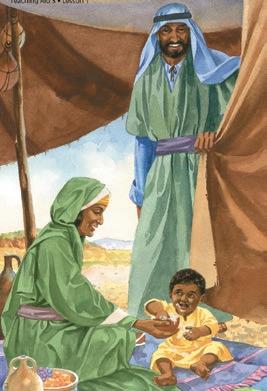
Teaching Aid 3

Hannah and Elkanah loved each other very much. But most of all they loved God. God had made Hannah and Elkanah’s family very special. But Hannah wanted their family to grow. She was sad that they didn’t have any children.
One day, Hannah and Elkanah went to a special tent-church to worship God. While Hannah was there, she asked God for something special. (Fold your hands as if praying.) Hannah prayed for a baby boy. She cried while she was praying because she was so sad. She promised God that if He gave her a baby boy, she would have the boy serve God.
Eli, the priest at the tent-church, saw Hannah praying and crying. He saw that while she was praying, not a sound came out of her mouth. He talked to Hannah about what was wrong.
Hannah said, “I’ve been praying here because I am very sad.”
Eli told her, “Go in peace. God will give you what you have prayed for.”
Early the next day Hannah and Elkanah worshiped God and then walked home. Hannah didn’t feel quite so sad anymore.
Soon God answered Hannah’s prayers. Hannah and Elkanah had a baby boy. They named him
Samuel. (Point to Samuel on the poster.) God had given them baby Samuel for their family.
Hannah and Elkanah liked to take care of little Samuel. They gave him food to eat. They gave him milk to drink. (Have the children pretend to hold a baby. Then have them rock and feed the “babies.”) They dressed him every day and kept him safe. (Let each child pretend to wrap a baby in a blanket.) And they loved Samuel. (Hug yourself.)
(Point to each person on the poster as you say his or her name.) Hannah and Elkanah were happy that God had given them little Samuel. They thanked God for Samuel and took very good care of him. They were glad that God had given them a family. God gives us families too.
◾ Who wanted a baby in the story? Hannah.
◾ Who did God give to Hannah? A baby boy named Samuel.
◾ How would you feel if you wanted something as much as Hannah wanted a baby? Children may have a variety of answers. They may feel sad, want to cry, or be angry, etc.
◾ Who gives us families? God gives us families.
Use the following activity to further review today’s Bible story from 1 Samuel 1:1-23. Listen carefully as I tell you the Bible story of Hannah and Samuel one more time. If you hear the name Hannah, fold your hands. Demonstrate folding your hands in prayer for the children. When I say the word “baby,” pretend to rock a baby. Show the children how to rock a baby. As you read the story, pause to give the children time to do the action. Do the actions with them.
Here’s our story:
Hannah (Fold hands.) wanted a baby. (Rock a baby.)
Hannah (Fold hands.) prayed for a baby. (Rock a baby.)
God gave a baby (Rock a baby.) to Hannah. (Fold hands.)
God gave Hannah (Fold hands.) her family.
Repeat the activity to help the children understand the Bible story about Hannah and Samuel.
“Love one another.” John 13:34
As children practice a Bible verse week after week, they will be able to understand and remember it. Have the children do either the practice or the rhyme, or both.
Practice
Say the Bible memory verse to the children and have them repeat it back to you. “Love one another.” John 13:34.
Now let’s sing our words. Setting words to music helps children remember them longer. Sing the words with the children to the tune of “We Wish You a Merry Christmas.” Teaching the actions with the words will help the children learn the verse.
Oh, “love one another.”
(Hug self, then open arms wide.)
Oh, “love one another.”
(Hug self, then open arms wide.)
Oh, “love one another.” (Hug self, then open arms wide.)
John 13:34. (Hold hands open like a book.)
The Bible rhyme is another way to practice the Bible memory verse. The Bible verse is in the last line of the rhyme. Teach the words and actions a line at a time. Have the children repeat each line back to you. Our new Bible memory verse rhyme helps us remember our memory verse from John 13:34. Let’s say the words together.
God made me. (Point to self.)
God made you. (Point to someone else.)
God made my family, too! (Hug self.)
God loves me. (Point to self.)
God loves you. (Point to someone.)
He said, “Love one another,” too. (Open arms wide.)
To understand that God gives them families, the children will explore activity centers. In today’s Bible story, from 1 Samuel 1:1-23, your class learned that God gave Hannah her family. To help children understand that God gives them their families, choose one or more of the following activities. Before you let the children begin these activities, demonstrate each one you have chosen. This week the Family Roleplay needs the most teacher supervision.
Materials: None needed
This activity helps children use dramatic play to further practice the Lesson Focus, “God gives us families.” Have the children spread out so they have room to move. God gives us our families. He gives us fathers. Show me what a father does. Give the children time to act out something a father does. Repeat for mothers, brothers, sisters, and grandparents. Give ideas for those children who have a hard time acting. Let the children use their imaginations to act even if you do not recognize what is being acted out. If you have a small group, have each child tell what he was acting.
Materials: Old magazines, glue, plastic spoons
Materials: Large and small blocks
In today’s Bible story about Hannah and Samuel, the family had three members. To help children explore their own God-given families, set out several large and small rectangle or square blocks to represent male family members. Set out large and small cylinder blocks to represent female family members. Let the children create families out of the blocks. A family may have a father (large rectangle), a mother (large cylinder), and a girl (small cylinder). Have them take turns telling each other about their families. God gives us families, just as He gave Hannah and Samuel their family in our Bible story.

This activity ties the Bible story to the children’s lives by allowing them to explore the families God gave them. God gave Samuel to Hannah. God gives us families too. You can glue magazine pictures on spoons to make puppets of your family. Show the children how to glue a magazine picture on a spoon to make a puppet. Let children tear pictures of people out of the magazine pages used in the Welcome Time Activities, page 9. Have them glue pictures on plastic spoons to make members of a puppet family using the pictures. Invite the children to use their puppets to act out things families do.
When you are ready to move to the last step in your lesson, have the children clean up the centers and gather into a big group. You may want to use this rhyme to help attract their attention.
Clean up, clean up, One, two, three. Can you clean up Just like me?
By thanking God for their families, the children will apply the Bible story of Hannah and Samuel to their own lives.
◾ Materials: Make-It/Take-It page for Lesson 1, crayons, 12-inch length of yarn for each student, Bible
Before class, remove the Lesson 1 page from the MakeIt/Take-It books.
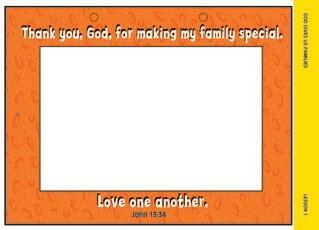
After cleaning up, have the children sit around a table. Use this time to help the children thank God for their families. Show the children once again where 1 Samuel 1:1-23 is in the Bible.
In today’s Bible story, God gave baby Samuel to Hannah and Elkanah. God gave them their family. God gives us families too. Who are some of the people in our families? (Children will give a variety of answers such as fathers, mothers, grandparents, brothers, sisters, pets, etc.) Our families are special. How can we thank God for our families? (Some possible answers are to pray, tell Him, show our families how much we love them, sing a song to God, etc.)
Another way we can thank God is to make a card thanking Him for giving us our families. Give each child a Make-It/Take-It frame. Let each child draw his or her family in the frame with crayons. Help write the names if children are not able to write. As you color, think of something you can thank God for about your family. Help children punch out the holes on the top of the frame and add a hanger for the frame with a 12-inch length of yarn.
After the children are done with their frames, gather the children into a circle on the floor. Have each
child share what they would like to say to God about their family by using this prayer: Thank You, God, for _____________. Be prepared to begin this sharing time. After each child shares, have the class say, “God gives us families. Thank You, God.” Encourage the children to share their frames with their families.
Close the lesson with a class prayer. Dear God, we learned in our Bible story that You gave Samuel to Hannah. You give us our families too. Thank You for each of our families. In Jesus’ name. Amen.
Birthdays are very important to preschoolers. You may choose to celebrate birthdays once a month or once a quarter. If you celebrate birthdays once a quarter, include children born in October and November in today’s celebration. You may want to ask parents for birth dates if you don’t already have a list.
Hannah celebrated when Samuel was born. Your parents celebrated when you were born. Several of you were born in September. Have each child stand next to you. ____________ has a birthday this month. He/She will be ____ years old! Repeat for children born in October and November if you are including those birthdays.
As a class, sing “Happy Birthday” to each child. Finish with a prayer. Dear God, thank You for (children’s names). We’re glad they are in our Sunday school class. In Jesus’ name. Amen.
• Let children make families using blocks to represent the different family members.
• As you say goodbye to each child, remind him or her of the Lesson Focus: God gives us families.
Send Home...
◾ My Sunday Pictures for Lesson 1
◾ Family Card A from My Sunday Pictures
◾ Make-It/Take-It frame for Lesson 1
◾ Projects made at centers



Children will learn that Jesus is God’s Son through stories about Jesus’ birth.
Scripture: Matthew and Luke
Value: God-Seeking
These lessons teach about Jesus’ childhood and when He called His first helpers.
Scripture: Deuteronomy, Matthew, Luke
Value: Discipleship
The final lessons are a study of Jesus’ ministry.
Scripture: Matthew, Mark, Luke, and Acts
Value: Faith
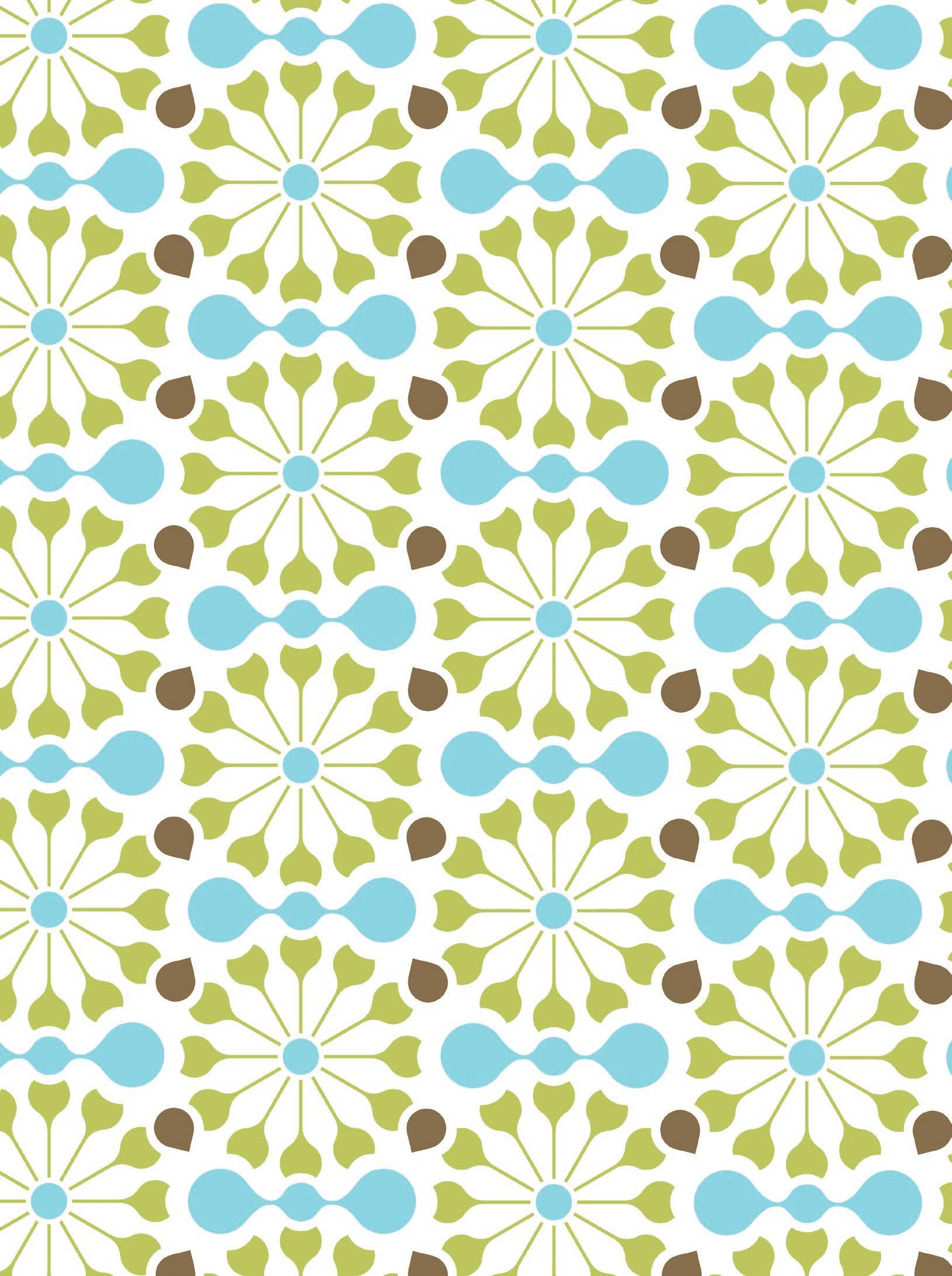
• 2 c. flour
• 1 c. salt
• 4 T. cream of tartar
• 1 pkg. unsweetened dry drink mix for scent and color
• 2 c. warm water
• 2 T. cooking oil
Stir over medium heat until mixture pulls away from sides to form a ball. Store in airtight container. (For eight to ten children.)


Based on season one, episode three of the groundbreaking TV show, The Chosen, this book will provide little readers with a new experience of Jesus–His kindness, His sense of humor, His availability, and His love for “the least of these”–through the eyes of children just like them learn about who Jesus really is.
Written by Amanda Jenkins, with illustrations by Kristen Hendricks, and based on the script by Dallas Jenkins, this book offers a new and precious way to learn about who Jesus really is.
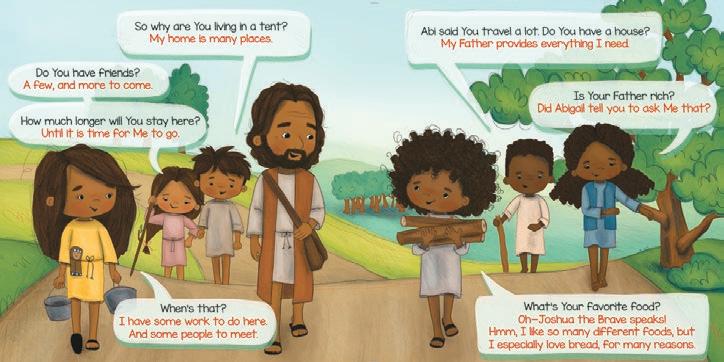










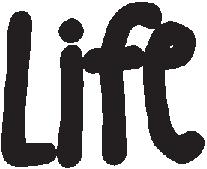

god gives us families I god gives us friends I god gives us the church

How to get your PraisePAC Resources: For best results, download PraisePAC resources to a desktop computer. Go to http://Lesson-DL.com This Quarter’s Access
*While it is possible to download a .ZIP compressed file to a mobile device, you may need to install a helper App first, like UnZip or WinZip. Check the Apple App Store (iOS) or the Google Play Store (Android) for a suitable app. Search for “Zip file opener.”
Designed for use with Preschool Teacher’s Guide, Preschool Make-It/Take-It, and My Sunday Pictures.
AIDS is published quarterly by David C Cook, DavidCCook.org. © 2025 by David C Cook, 4050 Lee Vance Drive, Colorado Springs, CO 80918, U.S.A. Bible In Life and David C Cook and its related logos are registered trademarks of David C Cook. All rights reserved. ISBN 978–0–781-44595-5 #1101125. Printed in Gunpo-si, Gyeonggi-do, South Korea, February–April 2025. All Scripture quotations, unless otherwise indicated, are taken from the Holy Bible, New International Version®, NIV® Copyright © 1973, 1978, 1984, 2011 by Biblica, Inc.® Used by permission. All rights reserved worldwide.
Digital products are subject to the End User License Agreement (EULA) found at DavidCCook.org/EULA/ and any additional terms or restrictions that may accompany the product. Digital products cannot be returned, sold, or relicensed. This product license is good for 6 months. After 6 months, you must purchase another license.
Illustrators: Kathi Ember, Robert Korta, Warren Ludwig, Tony Morris, Donna Kae Nelson, Loretta Riddle, Linda Weller; Photographer: © iStockphoto/omgimages
Cover Photo: © Camilla Bandeira/Getty Images

Reproducible pattern included so you can make your own Wooly puppet!




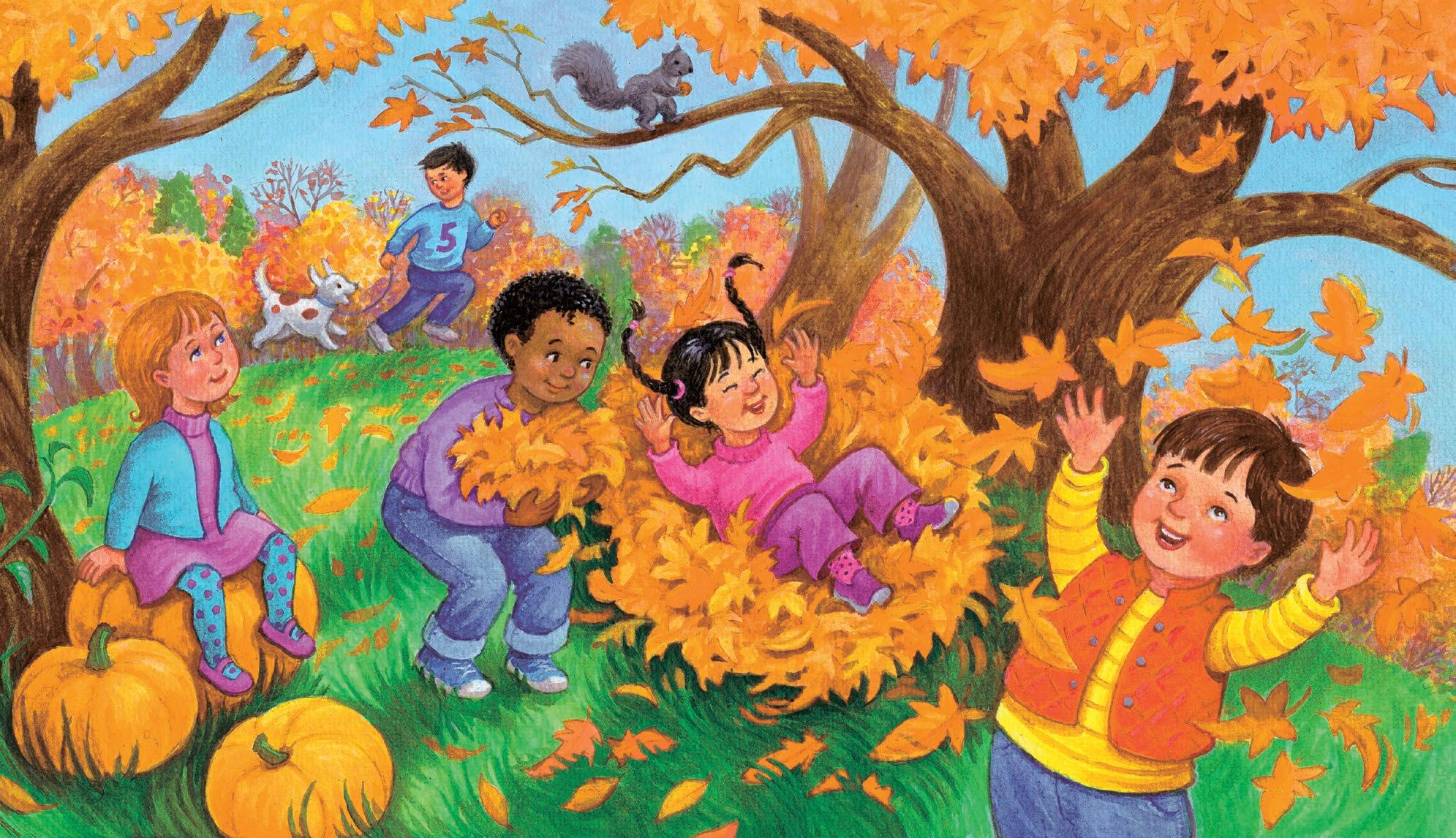
Using the Attendance Chart
Fill in the calendar dates and your children’s names. Hang this chart on the wall in a low place where it is accessible to children. Help them mark their attendance each week by coloring in the square, drawing a happy face, or adding a fall sticker of leaves or pumpkins. If you notice that a child has been absent for a week or two, try to drop him a postcard, or give him a call to let him know that you and all of his other friends at Sunday school missed him.
Materials:
1/2 yard white fake fur or fabric; scraps of pink felt for ear lining; scraps of black felt for hooves and nose; two 1/2 inch blue buttons for eyes (optional: blue felt); 1/2 yard 1/4-inch-wide red ribbon; 1 bell; white thread; disappearing ink marking pen for cloth; fabric glue; black embroidery floss
Instructions:
Enlarge the pattern pieces by 135%; add a 1/4 inch seam allowance to Back 1, Front 2, Tail 3, and Hoof 4; add a 1/2 inch hem allowance to bottom of Back 1 and Front 2. Lay pieces 1, 2, and 3 on wrong side of white fabric and outline with marking pen. Mark dart lines of Back 1 and Front 2 on wrong side of fabric. Cut out pieces 1, 2, and 3. In the same manner, cut Hoof 4 and Nose 6 from black fabric and Inner Ear 5 from pink fabric.
Pin Tail 3 pieces right sides together and sew, leaving the top open. Clip curves and turn right side out. Pin Back 1 pieces right sides together along center back. Sew the center back seam. Cut along slash line of dart. Fold back
along slash line, right sides together. Insert Tail 3 and sew along dart line. On Front 2, cut along center line of darts about one inch. (Do not cut all the way to dart end.) Pin darts and sew. With right sides together, pin center front seam (which includes the nose shaping), opening the dart seams to lie flat. Sew the center front seam.
Pin Hoof 4 pieces to the ends of the arms on Back 1 and Front 2, right sides together. Sew the hooves onto the arms.
With right sides together, pin Back 1 to Front 2. Sew the seam. Clip all the curves and turn right side out. Fold up the bottom hem 1/2 inch and stitch.
Sew the buttons on Front 2 at the dart points for eyes. If you have very young preschoolers, you may want to use felt pieces for eyes instead of buttons. Glue Nose 6 and Inner Ear 5 pieces in place with fabric glue using the markings on the pattern as a guide. Embroider a mouth, following the stitching guide on the pattern. Thread the bell onto the ribbon. Tie the ribbon around Wooly’s neck, cutting off the excess.

Fall 2025

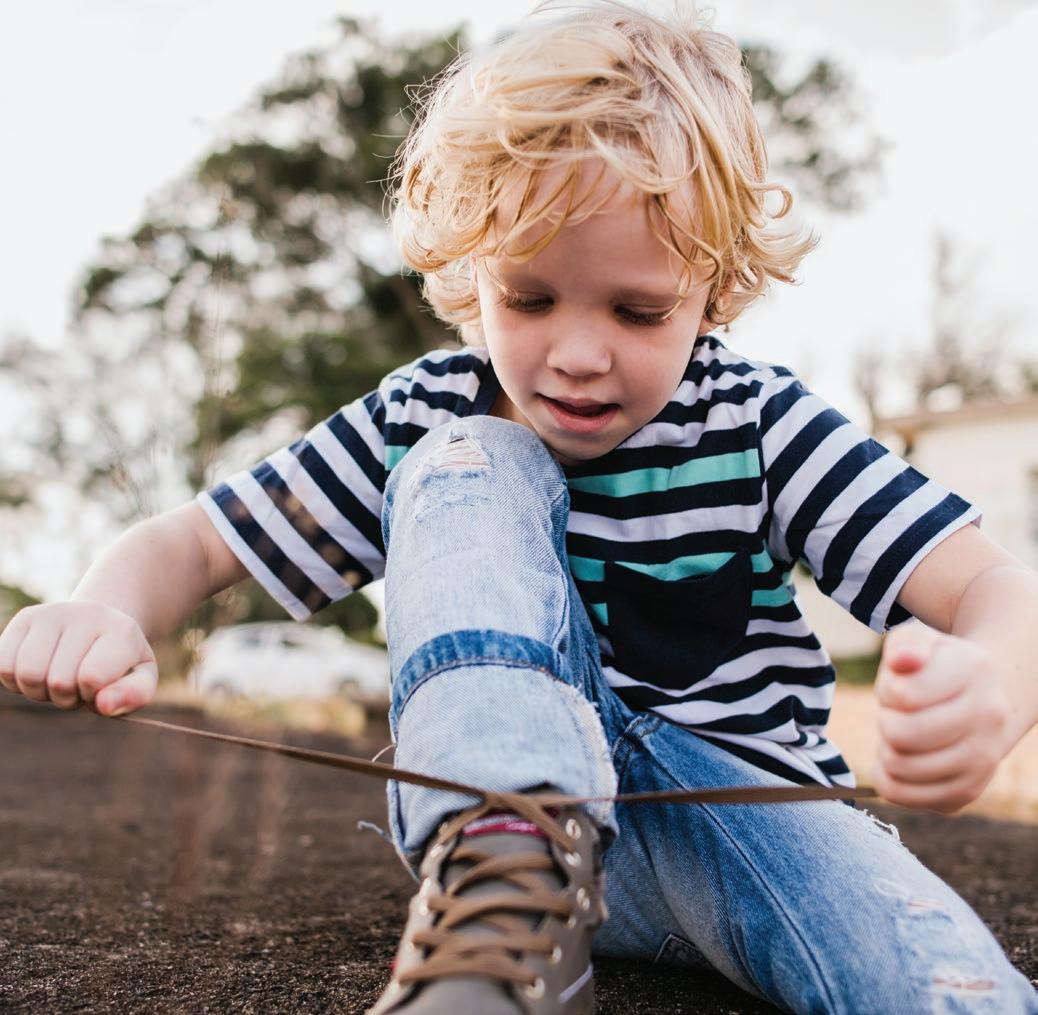
Thank You, God, for making my family special. Thank You, God, for making my family special.

Love one another. Love one another.
• Help children add a hanger for the frame with the yarn.
• The children can draw their families in the middle of the frame with crayons or washable markers.
• Cut a 12-inch length of yarn for each student. During class:
• Remove this page from the book. Also remove the top margin.
Before class:
• Who is in the children’s families.
• How God made Hannah’s family special with the birth of Samuel.
• The families God gives us.
Talk about:
• The children can decorate their frames using strips of colored tissue paper and a glue stick.
Optional:

Today your child learned that God gives us families just as God gave Samuel to Hannah’s family (1 Sam. 1:1-23). Display this frame in a special place at home this week. Talk about who makes up your family and how each member is special. Say a prayer with your child thanking God for making your family special.

Preschoolers will be delighted with all the things to do in this Make-It/Take-It craft book. Designed for in-class use, your students can do these crafts with little or no help! Perforated projects make prep time easy. Only basic classroom supplies are needed. Preschoolers will transform these pages into books, story puppets, popup cards, and puzzles—all with the goal of helping them remember the Bible lesson each week.
PRESCHOOL MAKE IT TAKE IT is published quarterly by David C Cook, DavidCCook.org. © 2025 by David C Cook, 4050 Lee Vance Drive, Colorado Springs, CO 80918, U.S.A. Bible In Life and David C Cook and its related logos are registered trademarks of David C Cook. All rights reserved. ISBN 978–0–781-44753-9 #1101325. Printed in Gunpo-si, Gyeonggi-do, South Korea, February–April 2025. All Scripture quotations, unless otherwise indicated, are taken from the Holy Bible, New International Version®, NIV® Copyright © 1973, 1978, 1984, 2011 by Biblica, Inc.® Used by permission. All rights reserved worldwide.
Cover photo: © Camilla Bandeira/Getty Images
Illustrators: Anne Kennedy and Robbie Short
Preschool Make It - Take It No. 1013

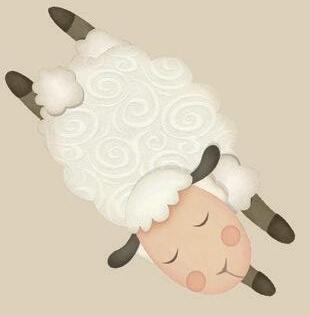
The lessons in this unit teach your child that God has provided families to love and care for us. Your child will learn the following stories:
◾ Hannah and her husband have baby Samuel (1 Samuel 1:1-23).
◾ Boaz and Ruth marry and have a child (Ruth 1–4).
◾ Abraham’s and Lot’s servants quarrel (Genesis 13:1-12).
◾ Abraham and Sarah have Isaac (Genesis 21:1-6).
Even simple trips to the park or the backyard are more fun with a camera. Take pictures of your everyday routines as a family. Share them with extended family who may not live close by.
UNIT THEME:
God Gives Us Families
BIBLE MEMORY VERSE:
“Love one another.” John 13:34
There are many stories about families in the Bible. Read some of them with your family this month. What can your family learn from other families in the Bible?
Use this action rhyme to help your child learn the Unit Memory Verse. The memory verse is in bold.
God made me, (Point to self.)
God made you (Point to someone else.)
God made my family, too! (Hug self.)
God loves me, (Point to self.)
God loves you (Point to someone else.)
He said, “Love one another,” too. (Arms open wide.)
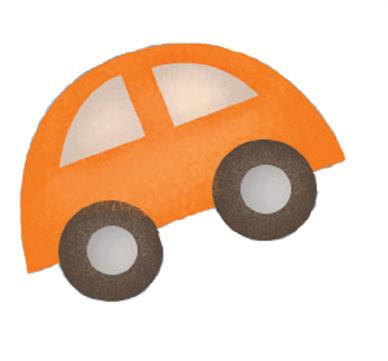
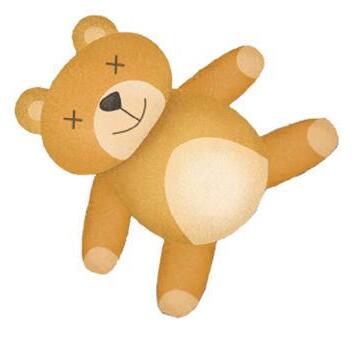
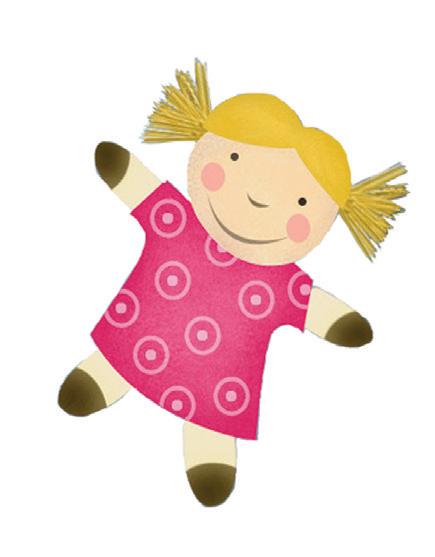
Every four or five weeks your child will bring home a My Sunday Pictures Family Card with information and activities to use throughout the unit. Your child will also get a weekly card with the Bible story for you to read together and activities to do.
PRESCHOOL MY SUNDAY PICTURES is published quarterly by David C Cook, DavidCCook.org. © 2025 by David C Cook, 4050 Lee Vance Drive, Colorado Springs, CO 80918, U.S.A. Bible In Life and David C Cook and its related logos are registered trademarks of David C Cook. All rights reserved. ISBN 978–0–781-44754-6 #1101425. Printed in Gunpo-si, Gyeonggi-do, South Korea, February–April 2025. All Scripture quotations, unless otherwise indicated, are taken from the Holy Bible, New International Version®, NIV® Copyright © 1973, 1978, 1984, 2011 by Biblica, Inc.® Used by permission. All rights reserved worldwide. Illustrator: Constanza Basaluzzo

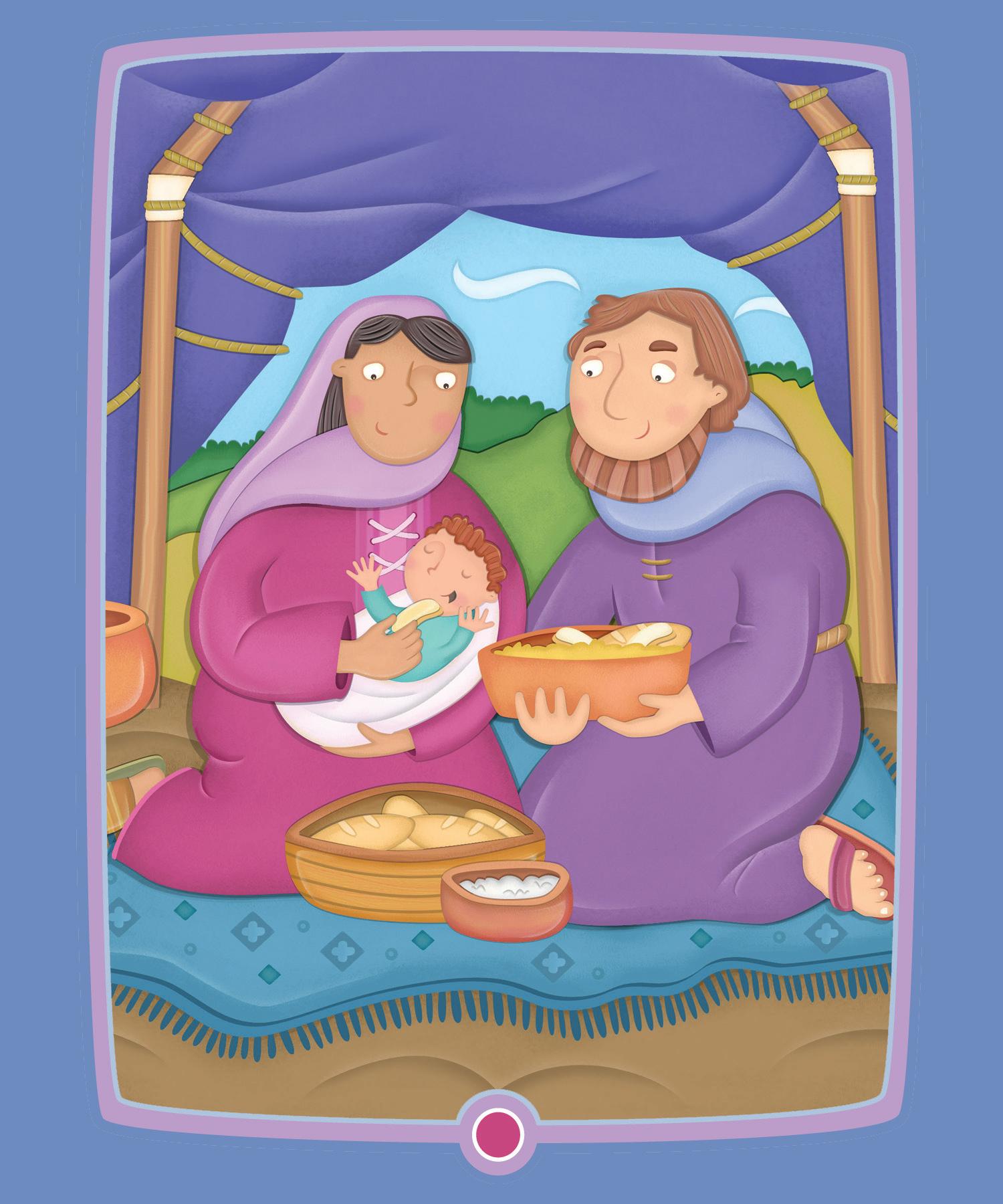
This story is based on 1 Samuel 1:1-23.
Baby Samuel’s mommy and daddy loved each other very much. They also loved God. And they loved the baby boy God had given them. (Point to baby Samuel.) They named the baby Samuel.
Samuel’s mommy and daddy liked to take care of him. They gave him food to eat. (Have your child pretend to eat.) They gave him milk to drink. (Have your child pretend to drink milk.) They dressed him every day and kept him safe. (Pretend to dress a baby.)
Samuel’s parents probably did some of the same things your parents do with you. Perhaps they held Samuel close and hugged him. (Hug your child.) They probably talked to him a lot and taught him new words to say.
Samuel’s parents thanked God for giving them their family. They took good care of little Samuel.
Lesson 1

Use these activities throughout the week to review the Bible lesson as a whole family or individually with your child.
Make a family tree using your handprints, paint, and butcher paper. Draw a trunk and a few main branches to start. Then, have each person in your family pick a color of paint, spread a little on a paper plate to “ink” their hands, and make handprints as leaves on the tree. When the paint dries, add a picture and name to each handprint.
Gather pictures of animal families and cut them apart. Mix up the pieces. Have your child collect animals to put the families back together. God gave animals families, too. Talk about ways animal families are similar or different from the families your child knows.
Read books about families with your child. Talk about the different people in the families shown in the books. Mention the people in your family that God gave you.
Use these Bible activities during family devotions or special Bible times you have with your preschooler.
As you read the story of Samuel’s parents caring for him, let your child mimic the actions with a baby doll (pretend to feed, dress, and hug the baby).


Thank God for your child when you pray. Have your child thank God for mommy and daddy and other family members. Thank Him also for the family events of the day.

LESSON FOCUS: God gives us families.
BIBLE MEMORY VERSE: “Love one another.” John 13:34

Spend time one-on-one with your preschooler or include your entire family in these activities that help you revisit the Bible lesson for this week.
Read Bible stories and other books this week about how people in the Bible told others about Jesus. Talk about ways your family can share Jesus with others.
As a family, think of ways you can help share about Jesus with people all over the world. You might support a church missionary or collect clothes and toys to send to a mission group.
As you talk over the day with your preschooler, talk about ways you shared about Jesus. Remind your child we can share about Jesus with what we share and what we do.
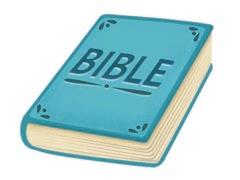

LESSON FOCUS:
Together we share about Jesus.
BIBLE MEMORY VERSE:
Use these Bible activities during family devotions or special Bible times you have with your preschooler.
This week’s Bible story will help your child know that together, with the church, we share about Jesus. Draw a heart and as you read the story, hold up the heart whenever the story talks of sharing about Jesus.
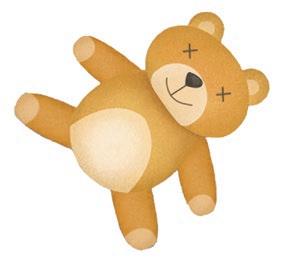
Make a picture list of people you would like to share with about Jesus. Pray for those people by name and ask God to help you share with them.
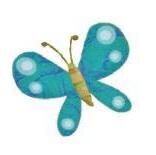
“Christ is the head of the church.” Ephesians 5:23
Preschool
My Sunday Pictures No. 1014
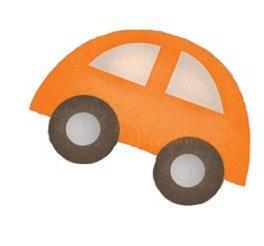
Copyrighted material; permission required to reproduce. 1101425